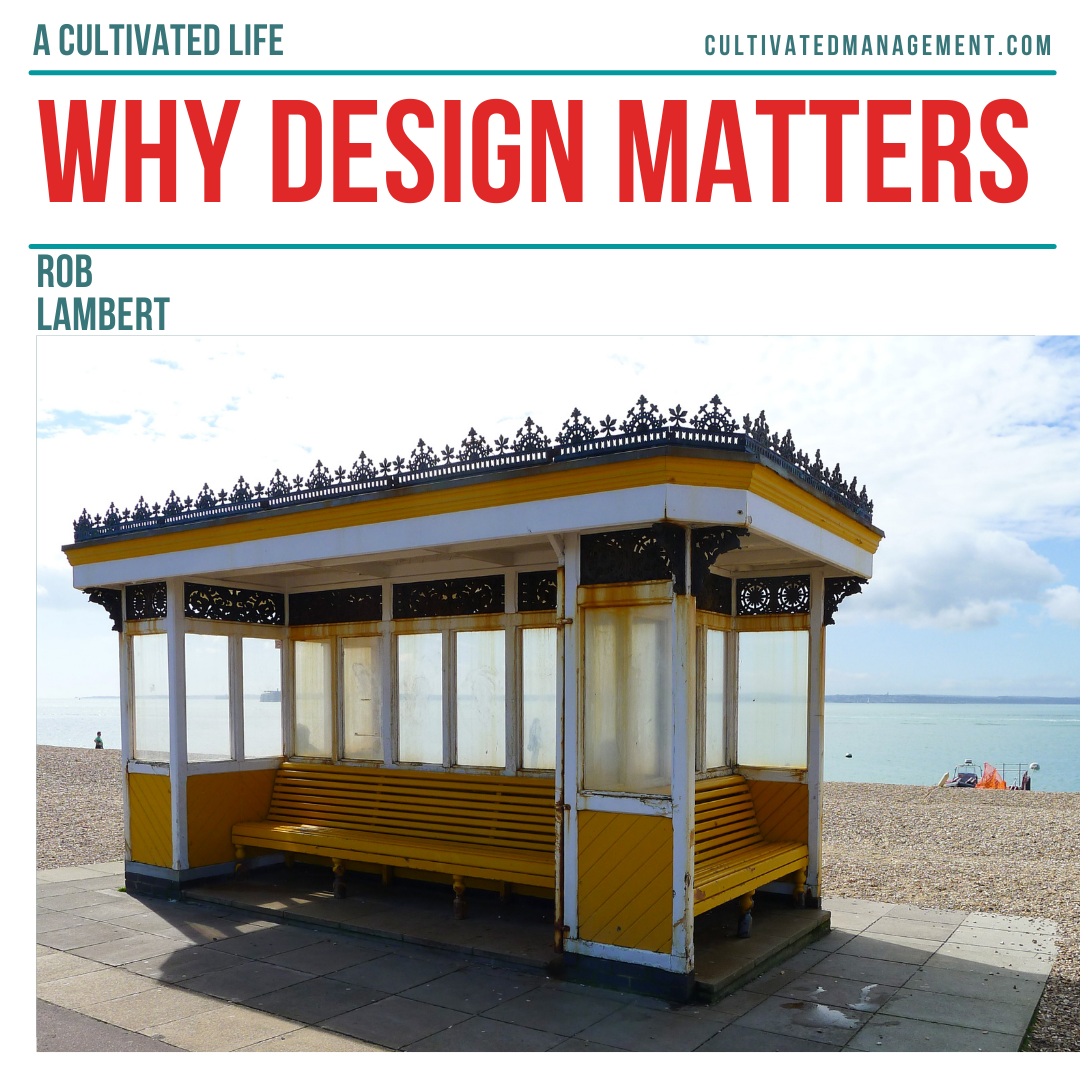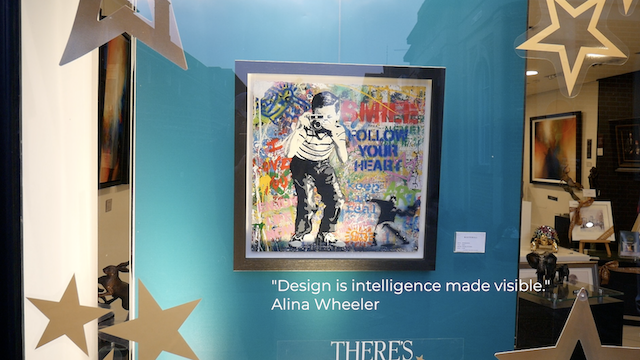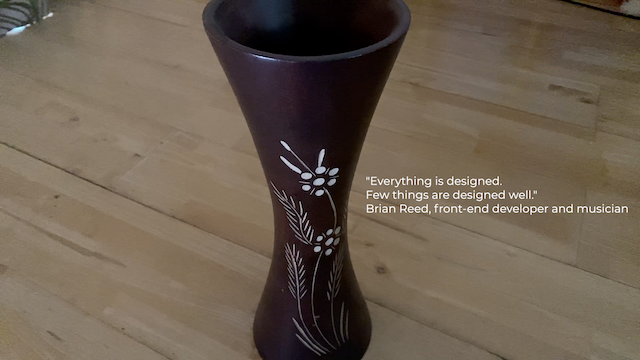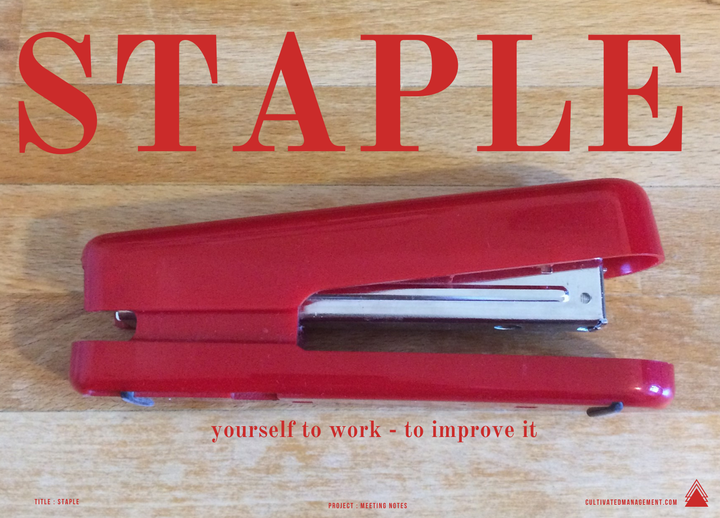What is design? And why it matters in business delivery

What is design, and why does it matter to managers?
In this video and post I’m going to encourage managers to consider design greatly, but maybe not in the way many people would imagine.
Design is important. When we think about it, we often look at the very visible and obvious elements.
We admire the design of cars, and some people buy cars that are pleasing to their tastes and inclinations.

Art, books, graphics and photos are often studied for their design elements.
Houses, buildings, cathedrals, shop windows – all designed to achieve something, whether that be aesthetic beauty or simply to entice people inside.
Our devices, gadgets and everyday household appliances are often considered pieces of well designed materials, a reflection of who we are and what our tastes represent. My kettle is a classic “design over substance”, looks good but could do better on its abilities.
Our clothes are often purchased and selected by us to convey a message to the world about who we are and what we represent.
So why does design matter to managers?
Many managers, when I talk about this subject, focus on the end product or service. The look and feel, whether it satisfies the job to be done, whether it meets the requirements set such as look, feel, value and more.
This is of course important, but of equal importance is how that design is brought to life, how it adds value to customers, how it becomes a real thing.
And this is the design of the processes and methods you use in your company.
Managers spend time and money hiring UX designers, product teams and service peeps to craft a beautiful end product or service, but they often neglect the very processes that bring these services to life.
Business processes are designed, whether consciously or not. They may be left to become what they are, or, as I advocate, managers knuckle down and study their own processes – and design something better.
To bring this to life, think about a company’s hiring process.
For one role I applied for the hiring team took 6 months to get back in touch. I’d got the job apparently. In one company it took about 3 weeks for them to provision me with a laptop when I turned up for work – for a role that needed a laptop. 3 months with no computer.
In another company the induction process was so bad that the manager didn’t even know I was arriving and I was sent home at 10am.
Think about the design of the very processes behind these examples. Who designed the system to be so bad?

When we think about designing processes we could consider:
- Does work flow?
- Is the process being studied and improved?
- Was the process even designed to add value in the first place?
- What was the purpose of the design? To add value? Or to control people and measure worker output at a macro level?
- Was it designed to deal with cross functional boundaries, after all, all work flows across boundaries, or was it merely cobbled together?
Was the flow of work designed to bring value, or left to organically become something of a hindrance.
I wouldn’t have a job in the agile management space if managers designed their work-flows better.
Design in business is everywhere at a process and delivery level. And I believe it requires as much study and conscious design as you people spend on the very products and services they provide to customers.
Management Acid Test
An acid test I have for managers is to ask them this question:
“If your customers could see how your business works and how value is delivered for them, what would they say?”
Would your customers be appalled at the confusion, red-tap, delays, mistakes, gaps in process and inability for people to get their jobs done? Or would they be amazed at how slick and effective your delivery of value is?
We’re only a few Glassdoor reviews away from customers seeing what happens in our companies. Plus we owe it to our customers, employees, shareholders and investors to build something that adds value, not drain money. Yet, poorly designed systems of work are a major problem in many companies.
It’s why this question gets to the essence of why design matters – because when we consciously design our value delivery to our customers, we get all of the benefits and goals of good design.
What is good design?
“Design adds value faster than it adds costs.” - Joel Spolsky
When you’re designing a process at work it shouldn’t cost a lot to add value.
It should add value quickly and not be so complex that it takes a PHD to decipher what happens. A good way to see how quickly you add value is to staple yourself to work and map out the path that work takes.
It could be a work item, a customer support case, a new hire, or a purchase order – whatever.
Draw and map that journey out. Study it. Cry a little. Stop crying about it, then get to work simplifying it, focusing on adding value, not costs through delays, control boards and slow decision making.

“Design is intelligence made visible.” - Alina Wheeler
It should be obvious to everyone in your team how intelligent the process is. Speak to your staff and ask them how simple and easy and intelligent it is to add value and get their job done.
They’ll often tell you exactly what is stupid and pointless. And when I ask managers to do this, they are often overwhelmed by the fact the stupidity has been obvious all along. They’ve just never taken the time to look for it, study it and design something better. It’s a good place to start.

“Make it simple, but significant.” - Don Draper, fictional character on Mad Men
Your business processes should be simple. Very simple. So simple that it’s possible to explain them to a child. Sure, hidden within this simplicity may be detail, rules, legal obligation and complicated hard work, but the process that flows work should be simple.
Work gets all complicated by itself, no need to add to that by not designing a good process in the first place.
The simpler a process is to understand, the easier it is to communicate, to follow the process, to improve it, to spot problems with it. Simple is hard to achieve though. Politics, functional silos, departmental budgets, competing goals – you get it – not easy. But by simplifying your path to “live” you will significantly improve your effectiveness at adding value for customers.

“Design is not just what it looks like and feels like. Design is how it works.” - Steve Jobs, co-founder of Apple, Inc.
And work it should. But surprisingly it’s quite common to find processes and flows of work that don’t work. That don’t add value. That don’t lead to positive measures of success.
In some companies it’s entirely possible to find entire departments that don’t add value, or have a purpose, or aren’t clear what they are doing!
A useful thing to consider here is a variation of Edward Deming’s constancy of purpose.
- Define the purpose of the business, department or process – ideally from a customer’s perspective.
- Find suitable measures that measure that purpose.
- Then run experiments, trials and improvements and check your measures.
His PDSA – Plan, do, study, adapt is a useful tool for improvement too. There is little point in designing a process that is smooth and slick and simple, but adds little value. Experimenting and improving is how to tease this out.
A process should work – it should help you do what needs to be done. It needs designing in this way.

“Everything is designed. Few things are designed well.” - Brian Reed, front-end developer
Indeed – everything in your business has been designed in some way, shape or form. But has it been designed well? If not, you can change that.
Design is not just the look, feel and value of a product or service for your customers, it applies within your business too.
Good managers understand design and why design matters – and they apply energy and attention to the processes in their companies, just like they do the very products and services they provide. They design everything to be better.
Design makes all of the difference. Good people working in a badly designed system of work will struggle. Managers hold big levers to pull; think rules, budget, goals, incentives – so use these to design processes that actually work.
And I’ll leave you with a quote from Edward Deming.
I should estimate that in my experience most troubles and most possibilities for improvement add up to the proportions something like this:
94% belongs to the system (responsibility of management)
6% special cases
Edward Deming
Go forth and pop your design hat on.
And consciously create visible, simple, effective, smooth and valuable processes within work. And when your customer asks if they can see how you work as a company, open your doors and welcome them in and WOW them with your process.
